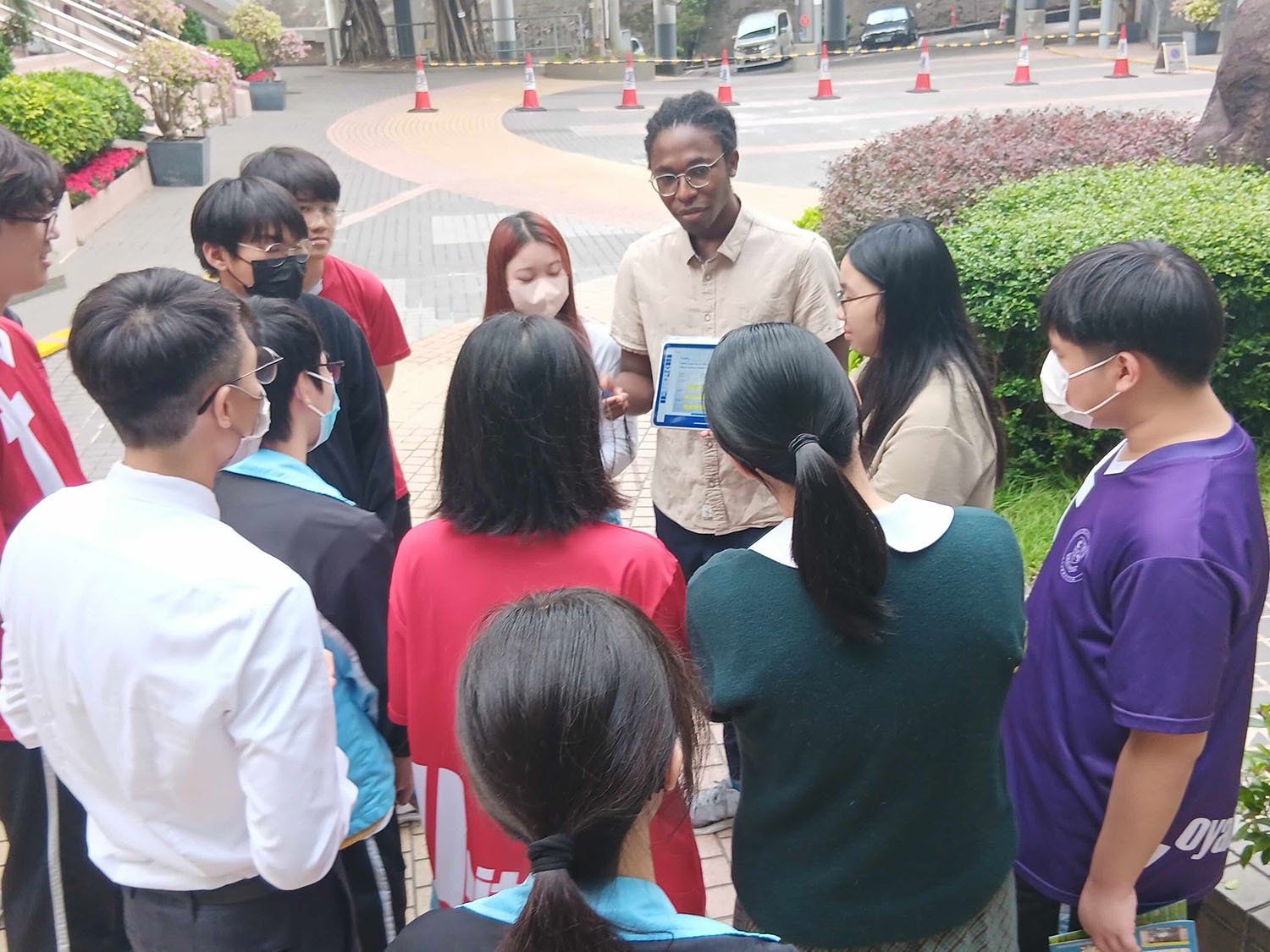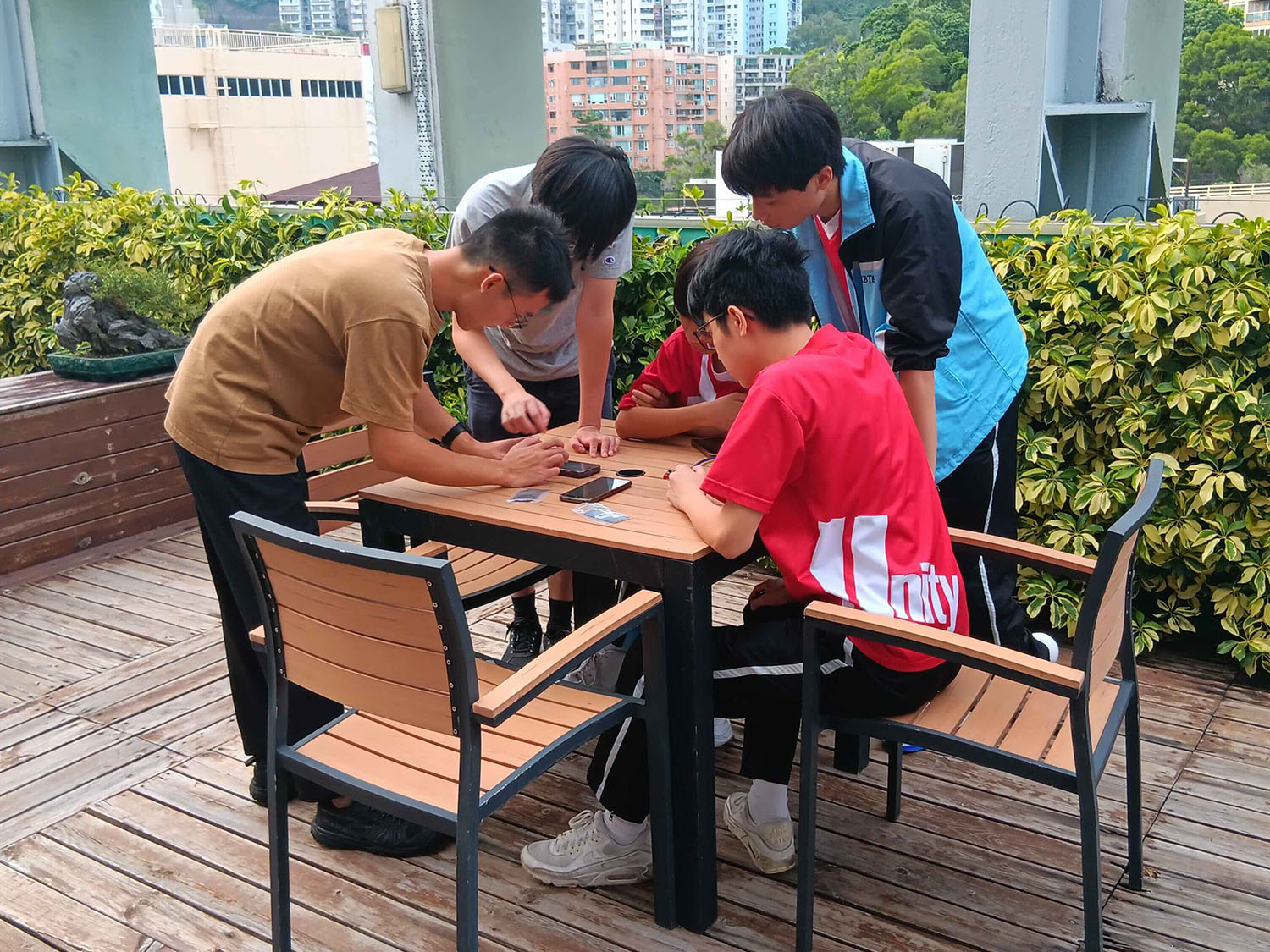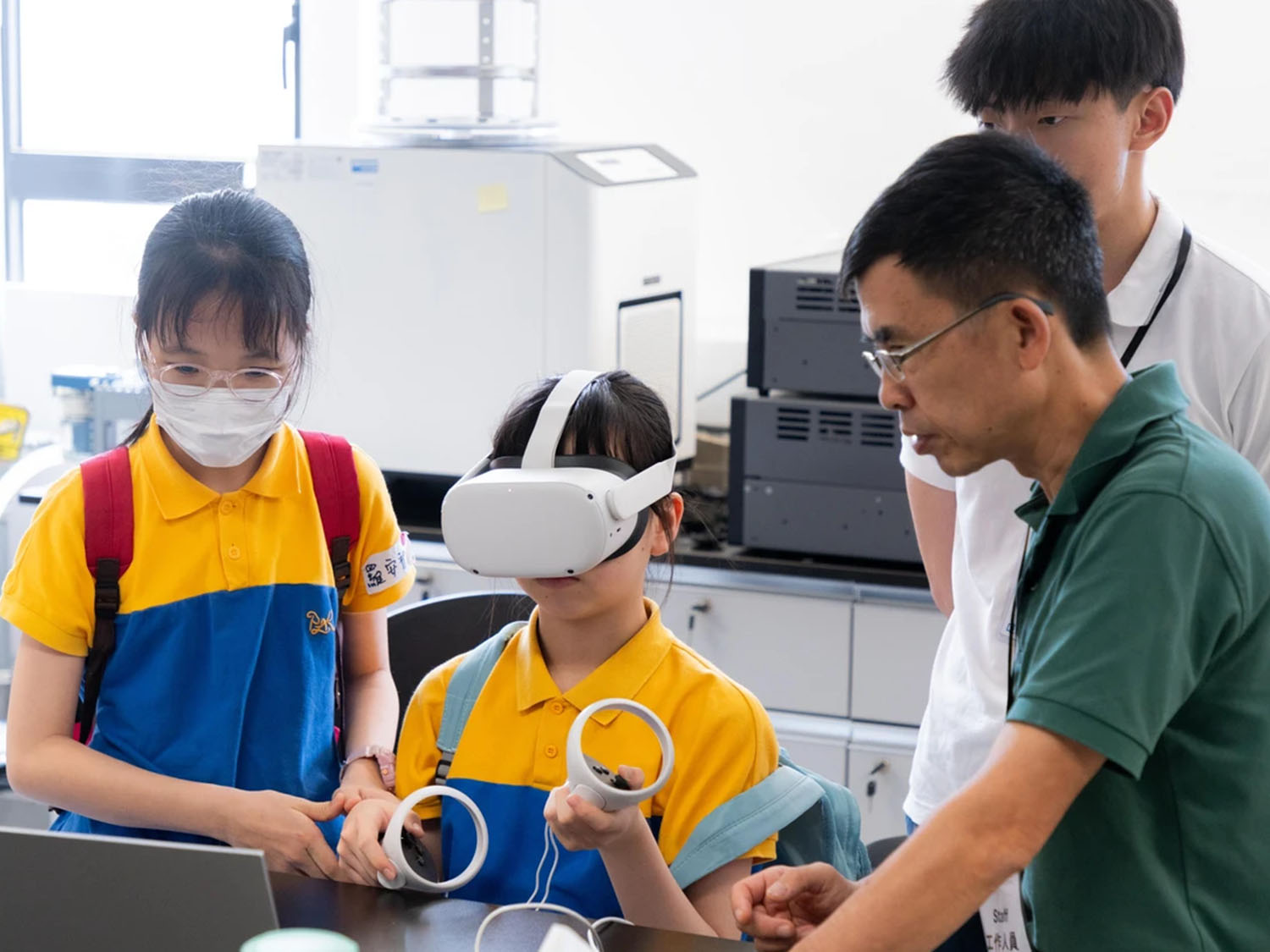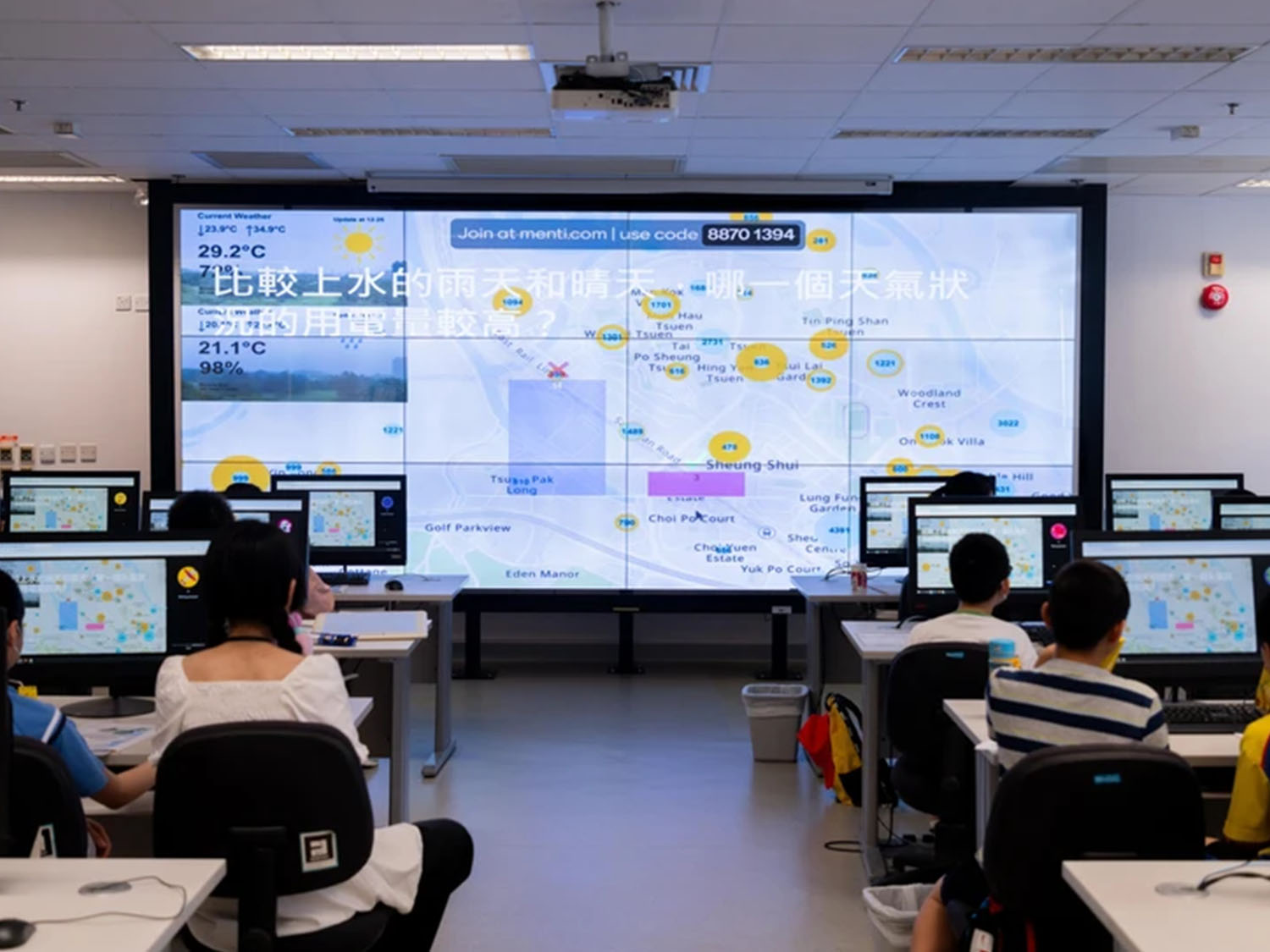SDG 07: Affordable and Clean Energy
"Renewable Energy Technology," a service-learning course taught by Dr Chan Mau-hing, focused on promoting clean energy and energy efficiency in buildings through STEAM education and green initiatives in secondary schools. As part of the service-learning project, HKBU students delivered a workshop on energy-saving concepts for Carmel Bunnan Tong Memorial Secondary School students, explaining light transmission and the use of sunshade films to reduce consumption. They also provided feedback and practical advice on enhancing the efficiency of kinetic energy-powered devices created by Islamic Kasim Tuet Memorial College students. This experience deepened the knowledge of university students and provided first-hand exposure to secondary school students on green energy, highlighting the importance of collaborative efforts in creating a sustainable future.
Inspiring young minds in renewable energy education
The National Geography Camp for Primary Schools – hosted by the Education Bureau and the Hong Kong Geographical Association, in collaboration with the Department of Geography at HKBU, the Asian Energy Studies Centre of HKBU, the Hong Kong Meteorological Society, and the Geospatial Lab of the Development Bureau – engaged 40 primary school students from eight schools to explore renewable energy under the theme of sustainable energy developments in China. The presentation of Dr Daphne Mah, Director of the Asian Energy Studies Centre, covered the energy landscape, major development characteristics and trends, and advancements in energy technologies. The half-day activities included visiting a rooftop solar system at HKBU to learn about the benefits of solar energy. The students also used infrared cameras to document heat sources, enhancing their understanding of energy consumption. A virtual reality journey introduced them to major renewable energy projects, including the Three Gorges Dam, while the Geospatial Lab session taught them about the applications of spatial data. Finally, the students collaborated to create an online energy map, reinforcing their learning experience.
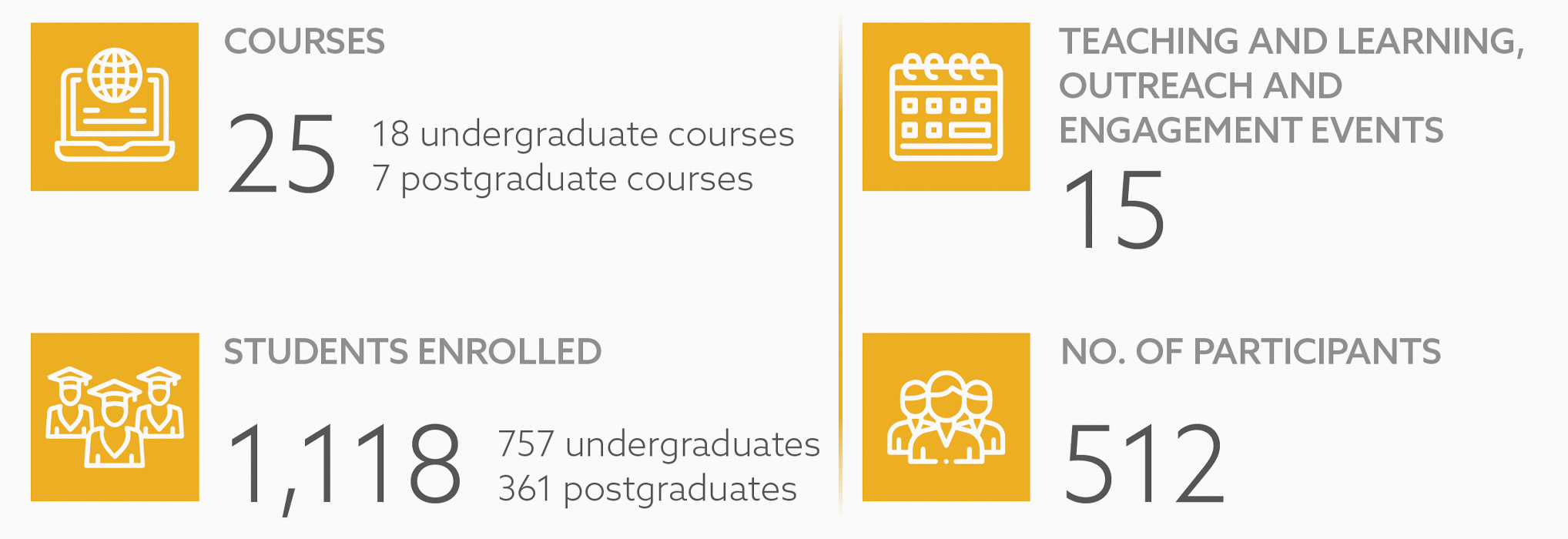

Centre for Sustainable Development Studies and Department of Accountancy, Economics and Finance
Authors: Han Steffan QI*, Kang Hua CAO, Chi Keung WOO, Raymond LI, Jay ZARNIKAU
*Corresponding author
Large-scale solar generation development in Texas is projected to continue albeit below figure’s declining levelised price trend of solar power purchase agreements (PPAs). Collaborating with Dr C.K. Woo of the Centre and a team of international researchers, Dr Cao uses Texas’s electricity market data to quantify a solar generation developer’s revenue forecasts and risks of solar PPAs. These forecast results reveal the developer’s optimal trade-off between spot and forward solar energy sales, akin to the risk-return relationship rooted in Markowitz’s portfolio theory. Real-world relevant and policy important for Texas’s electric grid and those around the world with wholesale market competition, this empirical finding informs the market economics and risks of solar capacity expansion, a critical element of the deep decarbonisation pathway for attaining the net zero target of the United Nations.
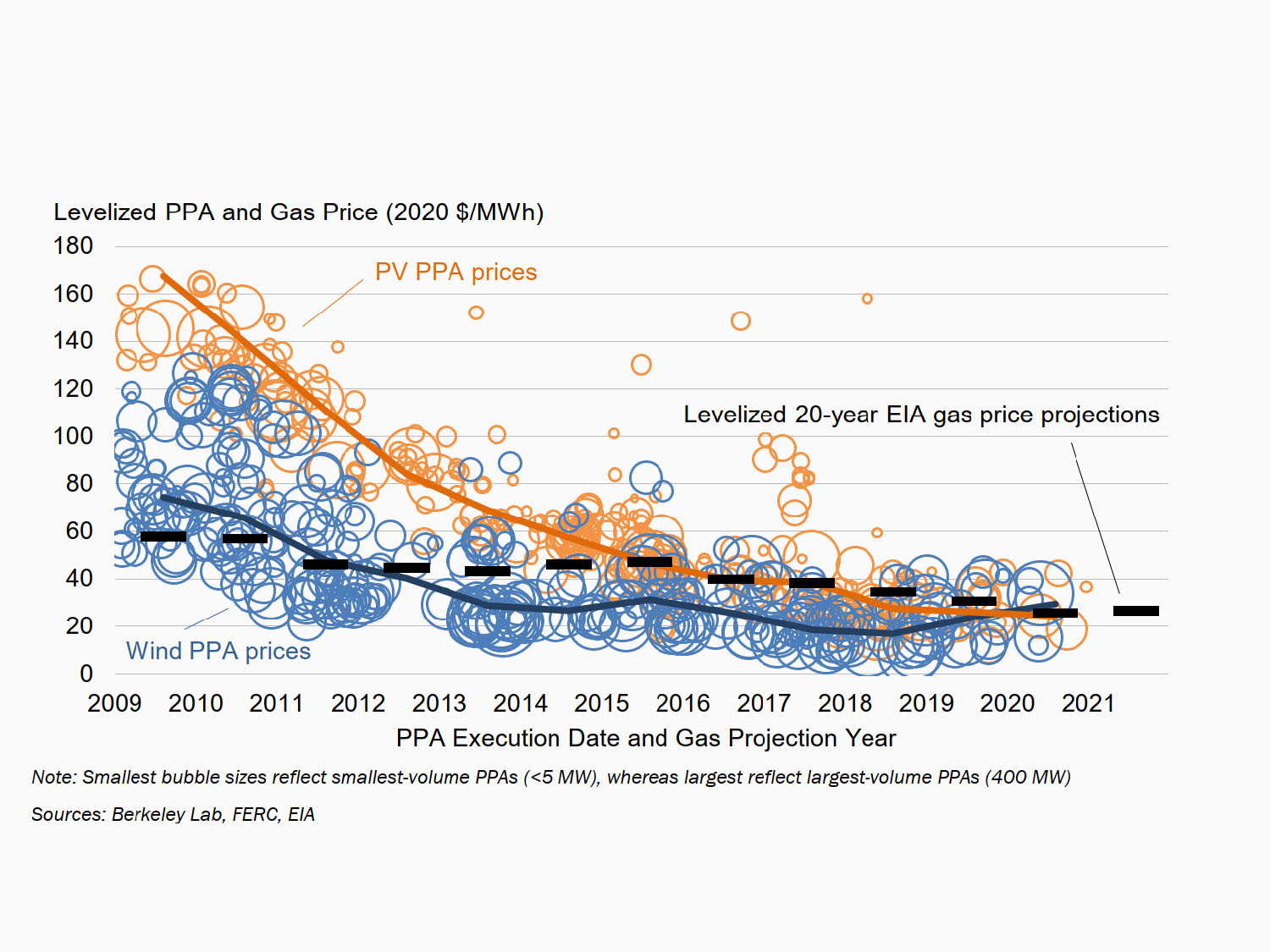

Bio-inspired microreactors continuously synthesise glucose precursor from CO2 with an energy conversion efficiency 3.3 times of rice
Department of Chemistry
Authors: Yujiao ZHU, Fengjia XIE, Tommy Ching Kit WUN, Kecheng LI, Huan LIN, Chi Chung TSOI, Huaping JIA, Yao CHAI, Qian ZHAO, Benedict Tsz-woon LO, Shao-Yuan LEU, Yanwei JIA, Kangning REN*, Xuming ZHANG*
*Corresponding author
This work aims to tackle excessive CO2 and food shortages by addressing challenges in scaling up artificial photosynthesis in microreactors. Previous microreactors showed advantages of enzyme immobilisation but lacked efficiency due to low enzyme density. This work used a layer-by-layer strategy to trap enzymes in a 3D layered structure, providing an ideal environment for efficient conversion. These tiny reactors continuously convert CO2 into a glucose precursor, demonstrating significant improvements in activity, stability, and reusability compared to free enzymes. This suggests a high potential for mass production, offering a sustainable solution for both food supply and carbon neutralisation in the near future.




In 2023, the campus installed solar photovoltaic (PV) panels across the rooftops of six buildings, covering a total area of 1,800m2. These solar PV systems have generated approximately 400,000 kilowatt-hours of renewable energy over the last academic year, resulting in the avoidance of around 150 tonnes of carbon dioxide emissions. This project has been recognised under the Renewable Energy Feed-in Tariff Scheme by CLP Power Hong Kong Limited to support the development of clean energy in the region.
To foster engagement within the University community, real-time updates on the energy generation performance and data are now publicly available through the HKBU website. This information is also easily accessible to students and staff via the HKBU mobile app.
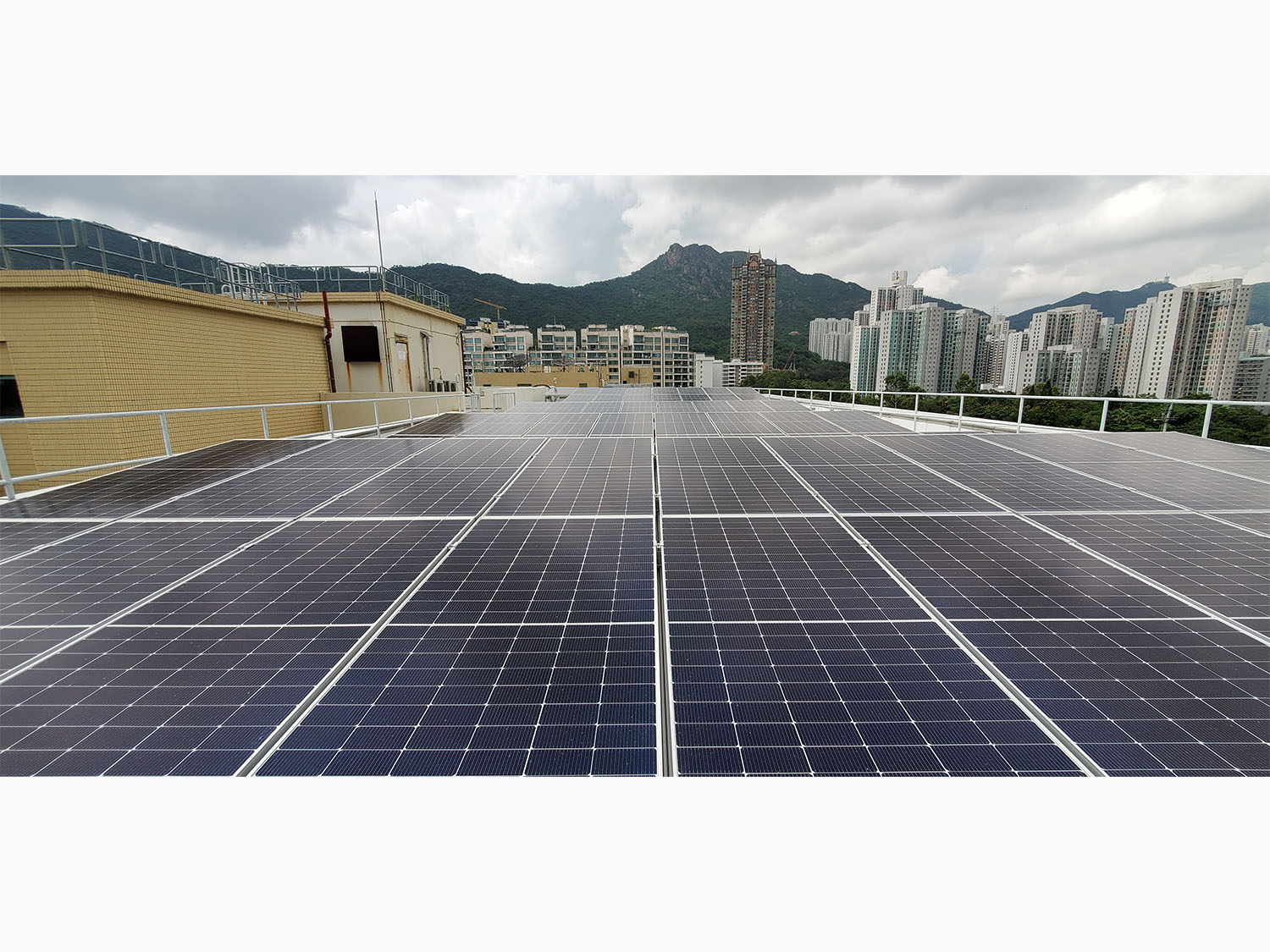

Five-year energy efficiency plan
To make significant strides towards reducing energy consumption and creating a more energy-efficient campus for the University community, HKBU has established a comprehensive five-year plan (2020-2025) focusing on enhancing energy efficiency for both new and existing buildings. This plan involves the implementation of smart technologies to minimise energy usage, as well as regular energy reviews to monitor and analyse energy consumption patterns, enabling the institution to make data-driven decisions and optimise its energy management, as part of its commitment to sustainability and creating a more environmentally responsible campus.
| 1. Upgrade buildings to higher energy efficiency | |
| Green Building Policy | The University has implemented a comprehensive University Green Policy for Capital Projects and Major Addition and Alteration Projects for University Campus. This policy mandates that all new buildings and major renovations must meet environmentally friendly standards, achieving a "Gold" or higher rating under the BEAM Plus assessments certified by the Hong Kong Green Building Council. Additionally, a minimum of 2% of the construction cost is allocated for installations and associated expenses for capital projects and major renovations costing over HK$50 million to support this initiative. |
| Retrofitting and retro-commissioning | The University has been actively retrofitting existing buildings to improve energy efficiency and reduce energy consumption. This includes replacing traditional light fittings with LED ones and upgrading 13 central air-conditioning units to more energy-efficient models. The University has also enlisted external retro-commissioning professionals to analyse the energy performance of campus buildings and identify opportunities for optimising energy usage, reducing energy costs, and improving the indoor environment. For instance, chiller replacement with higher energy efficiency models, incorporating artificial intelligence-driven sequencing, and retro-commissioning of existing chillers, resulting in increased operational efficiency. These improvements are estimated to save approximately 1,000,000 kilowatt-hours of electricity annually, which is equivalent to reducing around 400 tonnes of carbon emissions. |
| 2. Reduce energy consumption | |
| Smart technologies for building management system | The University adopted CLP’s Smart Energy Online service, which is an innovative platform designed to enhance energy management. It allows remote monitoring of the real-time energy consumption, usage patterns and load profile of the buildings across campuses. With the data collected, energy analysis is performed to identify opportunities for improvement and optimising system operations. Besides, individual Internet of Things (IoT) energy meters are also used to remotely and continuously monitor the energy performance and study usage patterns of specific systems and equipment for in-depth analysis. Furthermore, continuous monitoring of the solar PV system performance and renewable energy generation is conducted using IoT meters. Real-time data is displayed on the HKBU mobile app and website, accessible to both the HKBU community and the general public. This enables effective management of energy generation and consumption. |
| Smart housing management at student residence halls | Smart energy meters and behaviour-activated showerheads have been installed in student residence halls. To further promote behavioural changes, real-time energy and water consumption dashboards are showcased on TV screens in the residential tower lobbies. This aims to enhance students' awareness of their consumption habits, encouraging them to minimise unnecessary energy and water usage for a more sustainable lifestyle. |
| Smart classrooms project | In 2023, all 67 planned classrooms were converted into smart classrooms. This transformation involved upgrading the audiovisual equipment and installing motion sensors to control the lighting and air-conditioning, allowing convenient on/off functionality. |
| Occupancy sensors at open-plan office | In all newly renovated open-plan offices, occupancy sensors are installed to enable smart control of lighting and air-conditioning system. This ensures efficient energy usage and creates a more comfortable working environment. |
| Fume cupboard replacement | The University has replaced 50 fume cupboards with energy-efficient models that feature better motor efficiency and automatic sash closers. This has resulted in an estimated annual electricity saving of 500,000 kilowatt-hours, which is equivalent to a 58% reduction or approximately 200 tonnes of carbon emissions. |
| 3. Carbon reduction and energy wastage identification | |
| Periodic external energy audit | The University has planned to conduct energy audits for all buildings across its campuses in a rotational manner, with the goal of completing this process by 2025. As a testament to the University's commitment, these audits have been completed ahead of schedule, with all buildings assessed by 2024. |
| Annual internal carbon audit | On an annual basis, the University conducts an internal carbon audit to closely monitor its carbon emissions and identify areas for further improvement. |
| Review of hours of supply of air-conditioning | After a comprehensive review of air-conditioning supply hours for offices and laboratories, the University has reduced the default air-conditioning supply hours for all non-academic office premises on campus by 10 hours per week. |
| Review of temperature setpoint | Following a review of indoor temperature setpoints, the University has adjusted the default lowest summer indoor temperature setting from 22°C to 24°C on its premises, except for spaces with special needs. This adjustment helps to further optimise energy efficiency without compromising comfort. |
Performance indicators against baseline year
Compared to the baseline year of 2016-17, all performance indicators have shown improvement as a result of the implementation of various sustainability policies and projects.
| Performance indicators | 2023-24 against baseline year (2016-17) | |
| Greenhouse gas (GHG) emissions | Per GFA (tCO2e/sq.m.) | -31.47% |
| Per capita (tCO2e/FTE) | -39.27% | |
| Energy consumption | Per GFA (kWh/sq.m.) | -6.32% |
| Per capita (kWh/FTE) | -16.63% | |
| Water consumption | Per GFA (c.m./sq.m.) | -7.31% |
| Per capita (c.m./FTE) | -17.68% | |
